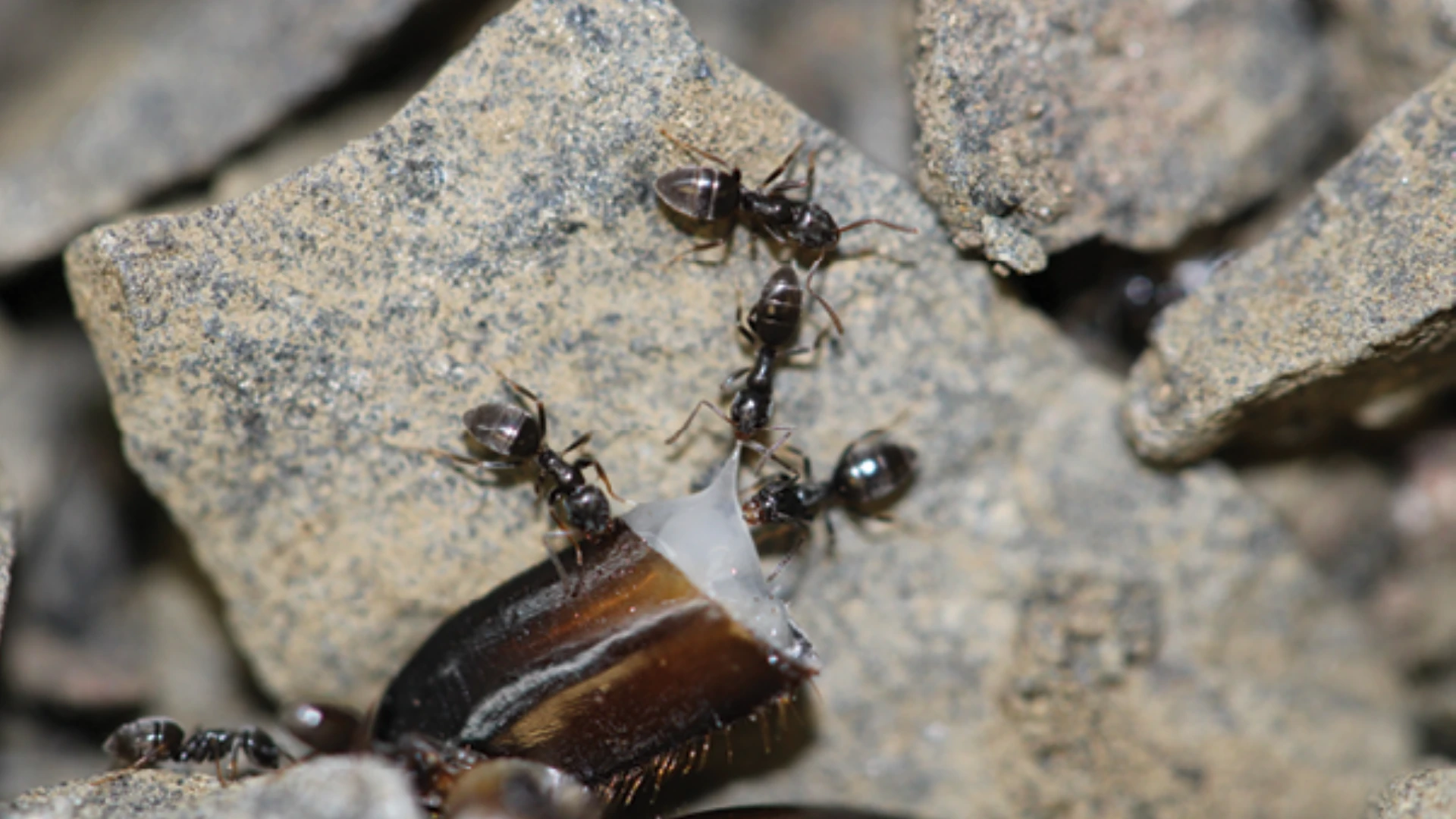
iStock | viiwee
Termite season is just around the corner, so now is the perfect time to "brush up" on some common signs of subterranean termite activity in structures, as well as review some conducive conditions that contribute to termite infestations.
Wood or paper products in contact with soil – Porches, steps, terraces, fences, logs, tree stumps, utility poles, grade stakes, form boards and planter boxes that are in contact with soil are all common infestation sites. In crawlspaces, especially, check for cardboard boxes and papers stacked on the ground. Outside, check any firewood or wood debris stored next to the foundation, and be sure to check behind foundation plantings.
High wood moisture – Look for damp wood near sinks, toilets, leaky pipes, or for wood that is wet from lawn sprinklers and downspouts. Generally, wood moisture that is higher than 15 percent will be attractive to a variety of wood-destroying pests. Termites can survive in drier wood, however, if they have a supplemental source of moisture such as a plumbing leak.
Blistered areas on wood – Flooring, trim or framing wood may have dark, blistered areas on the surface. Painted wood may look "bubbly." Actual damage is usually not noticeable on the surface of wood but infested wood may have a hollow sound when tapped. Dry wall (wallboard) over infested wood may also look "blistered."
Galleries in wood – Infested wood will have a honeycombed or layered appearance when broken open since termites eat the softer springwood, leaving the summerwood. Galleries usually run parallel with the grain and will contain a mixture of solid and digested wood and soil. Gallery walls have a pale, spotted appearance from soft fecal material that termites plaster on the surface. There will be no powdery frass, fecal pellets or sawdust piles beneath the wood (unless other wood-destroying pests are also present).
Mud tubes – Look for tubes, especially in sites connecting soil with wood such as foundation walls, piers, chimneys, on plumbing, the crack between the sill plate and the top of the foundation wall, or in cracks between structural members. Drop tubes or freestanding tubes may be seen, as well as short swarming tubes (see related story on page 60). Tubes are about ¼- to ½-inch (7-12 mm) wide. They may be difficult to see when they are inside cracks, so use a probe to dig lightly inside the crack, pulling out any soil.
Live or dead termites – If you break open infested wood or an active mud tube, you will likely find termite workers and soldiers inside. You may see swarmers (alates) flying, especially during midday. Live or dead swarmers may be found around windows, in light fixtures or in spider webs. If you are not present when swarming occurs, the only evidence may be their shed wings in these locations.
By being aware of the common signs of a termite infestation, you and your technicians will be well equipped to proactively address any termite problems, limiting the damage to homes and businesses by this destructive pest.
Types of Termite Tubes
Shelter tubes allow subterranean termites to leave their soil nests, cross barriers and bridge gaps to reach wood. The tubes protect them from enemies like ants and from air circulation which would dry out their soft bodies.
Termites make their tubes of "mud" – actually a combination of wood or soil particles held together with a glue-like secretion. Fresh, newly constructed tubes will be moist. Old tubes will be dry and brittle and break easily.
Shelter tubes are found on the surface of foundation walls, beams and sill plates, and along pipes or other supports. There are different types of shelter tubes, depending on function. An exploratory tube is narrow and thin and has many branches and forks that often go only a short distance. If an exploratory tube reaches susceptible wood, it may be reinforced and widened, becoming a working tube.
Drop tubes are not as common. They’re suspended down from wood to soil in protected places like crawlspaces. They are usually constructed when feeding has progressed some distance from the original shelter tube. Even rarer are free-standing tubes built from the soil up to wood. These tubes usually have a broader support base than drop tubes. Both drop and free-standing tubes are often surrounded by pieces of earlier tubes that fell. Drop tubes are lighter in color than free-standing tubes since they contain more wood fiber and less soil.
Swarming tubes or "castles" are sometimes built as flight platforms when winged swarmers are leaving the colony. They’re usually constructed 4 to 8 inches above ground, or in infested wood, and have many projections and horizontal branches. Swarmers can remain in these tubes for months waiting for the right environmental conditions to trigger swarming.

Explore the January 2011 Issue
Check out more from this issue and find your next story to read.
Latest from Pest Control Technology
- Target Specialty Products Expands Sales Leadership Team
- Mosquito Joe Promotes David Price to Vice President of Strategic Growth
- Abell Pest Control Recognized as One of Canada’s Best Workplaces in 2025
- Scorpion Launches Capacity Marketing Engine
- Petti Pest Control Owners Reflect on Finding Success as a Father-Son Duo
- Effective Mitigation of Crow Infestations
- Mosquito Control: Spraying vs. IPM
- Terminix Service's Leaders Inducted into South Carolina Business Hall of Fame





